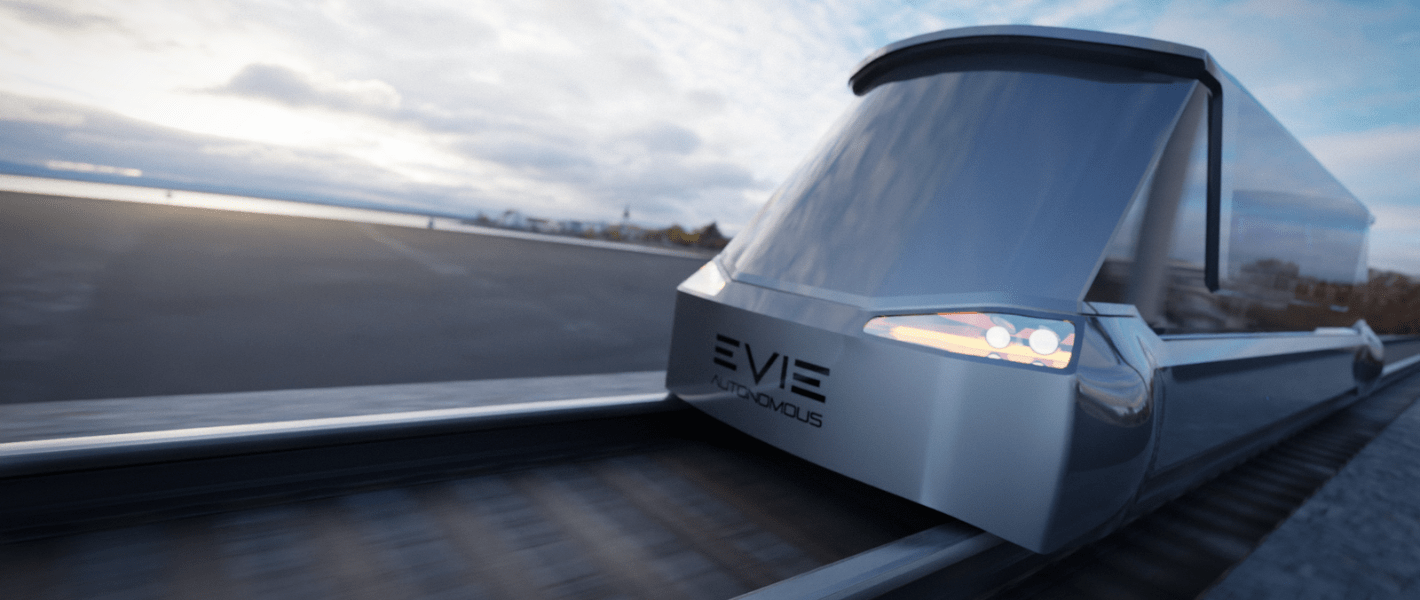Light Rail MPT (Mass Public Transit)
Shaping the Future and Redefining Urban Transportation
Evie Light Rail MRT Solution
Autonomous Light Rail MPT (Mass Public Transit) systems are a type of transportation that use small, driverless vehicles to transport passengers. These vehicles operate on a network of tracks, and they can be summoned by passengers using a mobile app or a station kiosk.
Autonomous Light Rail MPT systems offer a number of advantages over traditional public transportation systems. They are more efficient, as they can operate more closely together and they do not need to stop at every station. They are also more flexible, as they can be easily modified or expanded to meet changing needs. In addition, autonomous Light Rail MPT systems are inherently safer than traditional public transportation systems, as they are not operated by humans. This is because they are less likely to be involved in accidents, and they can be programmed to follow safety protocols more strictly.
As the technology continues to develop, we can expect to see autonomous Light Rail MPT systems being used more and more in urban areas. These systems have the potential to revolutionise urban transportation, making it more efficient, convenient, and safe.
Autonomous Light Rail MPT systems offer greater flexibility compared to trams and traditional rail. They can operate on existing roadways without the need for dedicated tracks, allowing for easier route modifications and expansions.
This flexibility Evie offers, is particularly advantageous in densely populated urban areas with limited space for infrastructure development.
EVIE Fleet Management Service, Certified Point System & Automation Technology Stack is perfectly adapted for this application.

The Benefits of Automating MPT
Autonomous light rail vehicles can be used to increase the capacity of light rail MPT systems. This can be done by using smaller vehicles that can operate in closer proximity to each other.
They can operate more smoothly and predictably and can be used to reduce the costs of Light Rail MPT systems. This is achieved by reducing the need for human operators and by reducing the need for infrastructure, such as stations and signalling systems.
It is also a huge priority to improve the safety of these systems. This can be done by reducing the risk of human error and by using vehicles that are designed to be more crash resistant.
The Technicalities
Autonomous MPT vehicles will need to be equipped with a variety of sensors, such as cameras, and EVIE’S Ai Radar, as well as many other vital sensors that help them to perceive their surroundings. These sensors will be used to generate a 3D model of the environment, which will be used to plan and execute safe and efficient movements.
Sophisticated software is used to control the vehicle’s movement, as well as to interact with other vehicles and pedestrians. This software will be constantly updated to improve the performance of the vehicle, and communication is vital for light rail MPT to be able to communicate with other vehicles and with infrastructure, such as traffic lights and road signs.
This communication is essential for ensuring the safe and efficient operation of autonomous vehicles.
